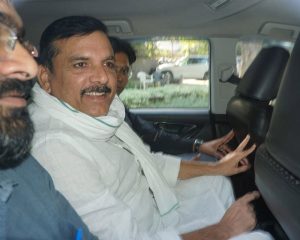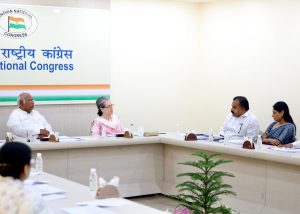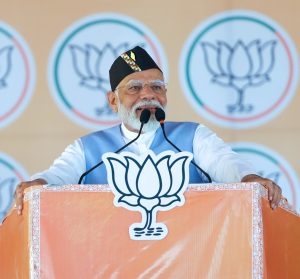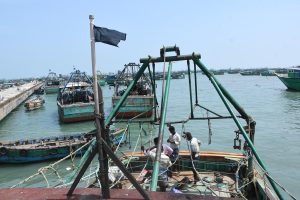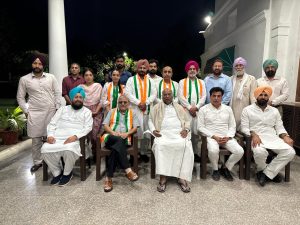Third Front, Tough Possibilities
Third Front, Tough Possibilities

By Sanjeeb KumarnnRecently, former JDU and senior leader Sharad Yadav had said that he did not see any possibility of a third front emerging before the 2019 Lok Sabha Polls, and suggested that all opposition parties should unite to fight the ruling BJP.nnThere is a sudden rise in thinking for an alternative to these two national parties in 2019 Lok Sabha Polls. Yes, the latest vibe is the subject of the Third Front and the man leading the pack this time is none other than Telangana Chief Minister K Chandrashekhar Rao (KCR).nnFor the new front, Rao met BJD president and Odisha Chief Minister Naveen Patnaik and West Bengal’s Chief Minister Mamata Banerjee. But Rao returned with empty hands after meeting both Patnaik and Banerjee, respectively.nnHis idea also hit on to another roadblock, after the two leaders from Uttar Pradesh, Akhilesh Yadav and Mayawati not confirming anything about the front.nnBut for formation of any such front has its own inherent contradiction. All these non-BJP and non-Congress parties cannot come together. For example, Left parties and the TMC cannot work together on any political platform.nnEven, Sitaram Yechury had said that any non-BJP and non-Congress third front would not be successful if it was formed “with the sole aim of coming to power.? This he said after his re-election as General Secretary of CPI (M) again.nnHowever, even if we assume that all the non-Congress, non-BJP parties will ever be able to come together, a possibility that sounds highly unlikely, they are not in a position to get the numbers.nnIn all the general elections since 1989, the Congress and the BJP put together have got more than 300 seats, the minimum required to have a simple majority in the Lok Sabha. There is very little reason to believe that this will not happen again, which practically eliminates the possibility of any other party or formation winning the majority.nnIn India?s political history, the only instances when non-Congress, non-BJP coalitions came to power were in the ninth and eleventh Lok Sabhas. In each case, the governments were supported from the outside by either the Congress or the BJP. While the V.P. Singh government survived on the BJP?s support, the Chandra Shekhar government was at the mercy of the Congress.nnOn the other hand, two United Front governments, headed by H.D. Deve Gowda and I.K. Gujral as Prime Ministers, had the blessings of Congress. But both United Front governments collapsed after Congress pulled the carpet from under the both.nnCurrently, most of the poorly conceived or visualised Third Front leaders are regionally powerful but nationally weak leaders. So basically they maybe winning chunks of votes wherever they are, whether Delhi, West Bengal, Telangana, Andhra Pradesh, Uttar Pradesh , Tamil Nadu, Odisha, Mizoram or Bihar, but outside these places, they are either too weak or completely non-existent.nnFor national interest, if you closely consider the ?Third Front phenomena? from all the three instances, 1997, 1989 and 1996 you?ll find that the major reason for the collapse of this experiment was lack of co-operation among the coalition parties. Even now there is hardly any guarantee that the Third Front of 2019 will supersede earlier flaws? That there will be no power struggle and no hankering for the top post or plum ministries. After all, almost all the parties and its leader are opportunists as per Mulayam Singh Yadav statement in 2004 where he had said that he was close to becoming the premier in 1997 but was betrayed by a few leaders, including Telugu Desam Party chief . Chandrababu Naidu, Sharad Yadav and Laloo Prasad Yadav..nnMoreover, what is the guarantee that one party won?t come in the way of the other? The ambition, the ego, the argument, and failing aspirations will arise and so will be the dispute. And if we dig further more into it, looks like ?The Third Front? is like building castle in air. A highly unrealistic proposition.



